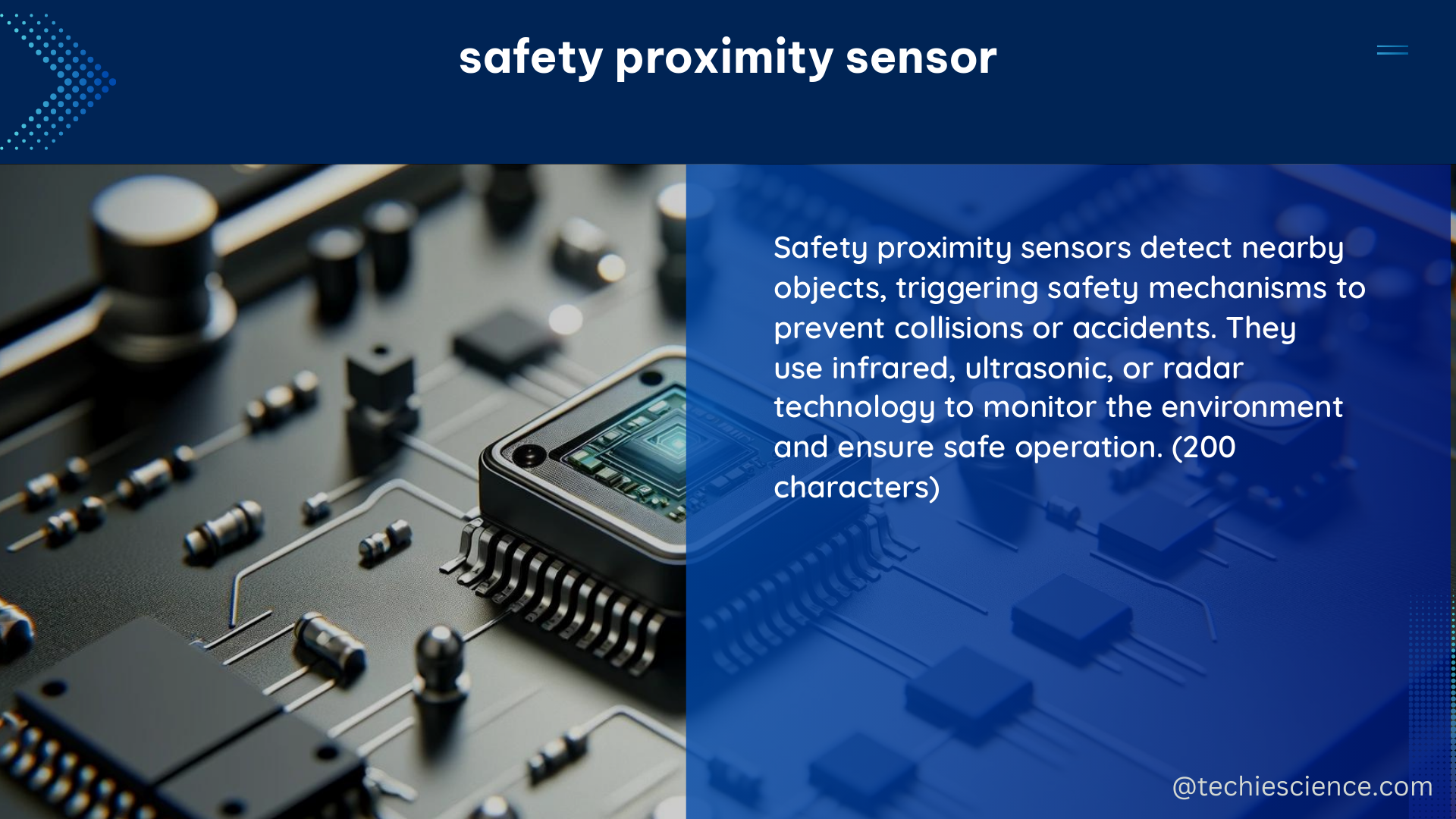Safety proximity sensors are essential components in various industrial and automotive applications, designed to ensure safety by detecting the presence of objects or people within a specific range without physical contact. These sensors provide measurable and quantifiable data that can be used to monitor and enhance safety, making them a critical part of any comprehensive safety strategy.
Understanding Performance Level (PL) and Safety Integrity Level (SIL)
One of the key aspects of safety proximity sensors is their Performance Level (PL) or Safety Integrity Level (SIL), which indicates the reliability and safety of the system. The PL is a measure of the ability of a safety-related part of a control system to perform a safety function under foreseeable conditions. The PL ranges from “a” to “e,” with “e” being the highest level of safety.
For instance, Solution 1.1 in the search results uses a proximity switch designed for safety functions, achieving a PL of “e,” which is higher than the required PLr of “d.” This indicates that the safety function can be used for safeguarding, providing a high level of reliability and protection against potential hazards.
Evaluating Mean Time to Dangerous Failure (MTTFd)

Another critical factor in assessing the safety of proximity sensors is the Mean Time to Dangerous Failure (MTTFd), which represents the expected mean time to a failure that could lead to a dangerous situation. This metric is crucial in determining the overall reliability and safety of the sensor.
In Solution 1.2, the sensor has an MTTFd of 83 years, indicating a high level of reliability and safety. This means that the sensor is expected to function safely for a very long period, reducing the risk of unexpected failures that could compromise workplace safety.
Integrating Safety Proximity Sensors with Other Safety Technologies
Safety proximity sensors can also be integrated with a wide range of other safety technologies to enhance overall safety and monitoring capabilities. These technologies include:
-
Computer Vision and Camera Analytics: Integrating proximity sensors with computer vision and camera analytics can provide advanced object detection and tracking, allowing for more comprehensive monitoring and response to potential hazards.
-
Digital Gas Monitors: Combining proximity sensors with digital gas monitors can help detect the presence of hazardous gases and alert workers to potential dangers.
-
Downed Worker Devices: Safety proximity sensors can be used in conjunction with downed worker devices to quickly detect and respond to incidents where a worker has fallen or become incapacitated.
-
Drones: Proximity sensors can be integrated with drones to provide aerial monitoring and surveillance, expanding the reach of safety monitoring in large or hard-to-access areas.
-
Fatigue Monitoring and Wearables: Integrating proximity sensors with fatigue monitoring and wearable technologies can help identify workers who may be at risk of accidents due to fatigue or other impairments.
-
Location Geofencing: Proximity sensors can be used in location geofencing systems to establish safe zones and monitor the movement of workers and equipment within a defined area.
-
Lone Worker Monitoring: Safety proximity sensors can be used to monitor the location and status of lone workers, ensuring their safety and providing rapid response in the event of an incident.
-
Permit to Work Technologies: Proximity sensors can be integrated with permit to work systems to ensure that only authorized personnel are granted access to hazardous areas or equipment.
-
Robotics: Safety proximity sensors are essential in robotic applications, helping to detect the presence of workers and other objects to prevent collisions and accidents.
-
Virtual or Augmented Reality: Proximity sensors can be used in conjunction with virtual or augmented reality systems to provide enhanced visualization and monitoring of safety-critical areas.
-
Vital Signs Monitors: Integrating proximity sensors with vital signs monitors can help detect and respond to medical emergencies, ensuring the safety and well-being of workers.
By leveraging these advanced safety technologies, organizations can create a comprehensive safety ecosystem that leverages the measurable and quantifiable data provided by safety proximity sensors.
Conclusion
Safety proximity sensors are a critical component in ensuring workplace safety, providing measurable and quantifiable data that can be used to monitor and enhance safety. By understanding the importance of Performance Level (PL), Safety Integrity Level (SIL), and Mean Time to Dangerous Failure (MTTFd), organizations can select the right sensors for their specific needs and integrate them with a wide range of safety technologies to create a comprehensive safety strategy.
References:
– Method for testing proximity detection and alert technology for safe construction equipment operation
– NIOSH – Proximity Warning Systems (PWS) Selection
– SICK – Safety Proximity Sensors
– National Safety Council – Proximity Sensors

The lambdageeks.com Core SME Team is a group of experienced subject matter experts from diverse scientific and technical fields including Physics, Chemistry, Technology,Electronics & Electrical Engineering, Automotive, Mechanical Engineering. Our team collaborates to create high-quality, well-researched articles on a wide range of science and technology topics for the lambdageeks.com website.
All Our Senior SME are having more than 7 Years of experience in the respective fields . They are either Working Industry Professionals or assocaited With different Universities. Refer Our Authors Page to get to know About our Core SMEs.